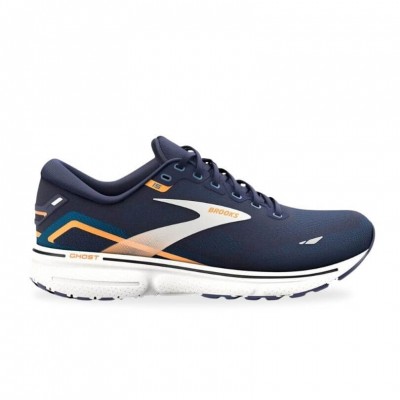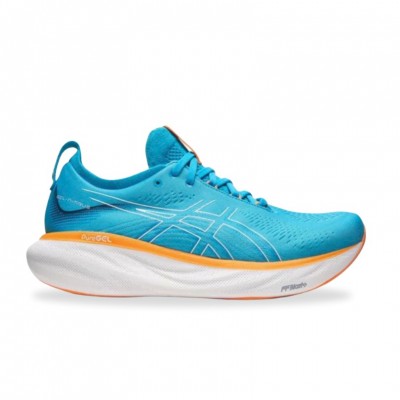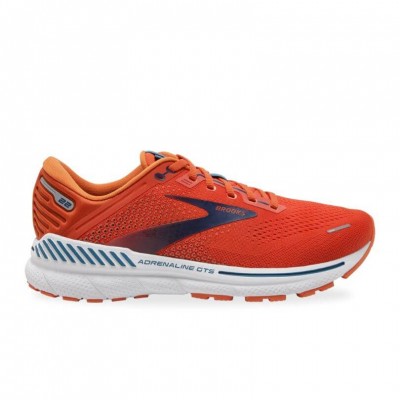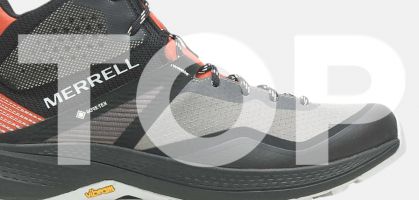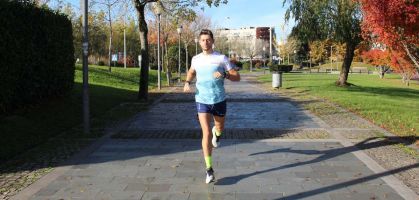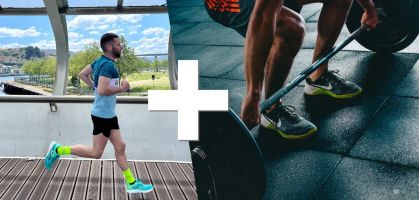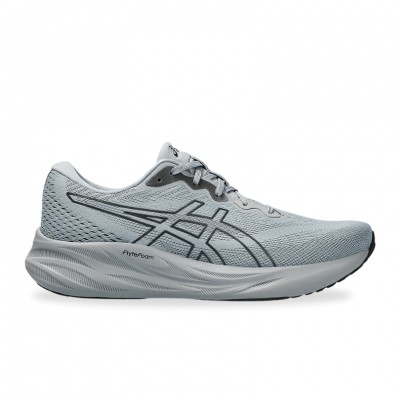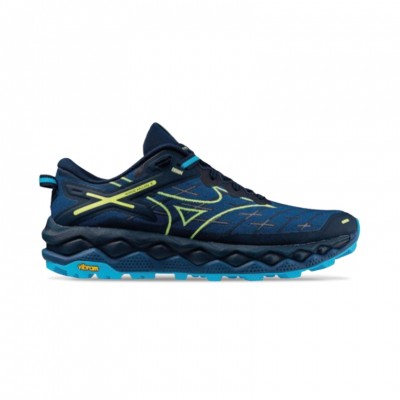Going for a run in the heat can be a challenge, especially during the summer months when we tend to prioritize rest over training. However, it is also an opportunity to enhance your performance. In this article, we will explain how heat affects your body, how to minimize risks, and how to make the most of your workouts when the sun is scorching. Get your running shoes, hat, and sunglasses ready because we're about to begin...

Not sure which shoe to choose?
In a few simple steps we help you to choose the ideal running shoe for you.
GO TO THE RECOMMENDERBenefits of Running in the Heat: Heat Acclimation, Cardiovascular Endurance, and More
While running in the heat may seem challenging, it offers remarkable advantages to enhance your performance. Explore the following benefits:
Heat Acclimation: Gradually adapting to running in high temperatures helps your body adjust and prevent dehydration. This process involves physiological changes such as increased sweating and reduced salt concentration in sweat. Heat acclimation also improves your body's ability to maintain a normal core temperature during exercise in hot conditions, enhancing both comfort and performance. According to a study published in the Journal of Applied Physiology, heat acclimation can boost endurance capacity by 15-25%.
Enhanced Cardiovascular Capacity: Running in the heat elevates your body's oxygen demand, leading to improved cardiovascular endurance. The increased effort required to dissipate heat by pumping blood to the skin strengthens your heart and enhances your ability to handle physical stress. Research published in the Journal of Sports Sciences suggests that running in the heat increases blood volume and improves the body's temperature regulation capacity [2].
Increased Endurance: Running in the heat challenges your body to work harder to stay cool, which strengthens your muscles and enhances your physical stress tolerance. Heat acclimation also improves your body's efficiency in utilizing water and electrolytes, preventing dehydration and muscle cramps during prolonged exercise.
Weight Loss: Running in the heat can elevate your calorie expenditure, aiding in weight loss. However, it's crucial to prioritize healthy and sustainable weight loss practices. Avoid wearing non-breathable clothing and ensure proper hydration and electrolyte replenishment to prevent dehydration. Always choose suitable attire for your runs.
Mental Health Benefits: Running in the heat presents mental challenges that can improve your mental endurance and coping skills. Developing resilience to physical and mental stress during hot runs can benefit other areas of your life.
Risks associated with running in the heat: Dehydration, heatstroke, and more

While there are numerous benefits, running in high temperatures also poses risks, including potentially life-threatening conditions. Consider these risks before running in the heat:
Dehydration: Running in the heat increases your risk of dehydration, a condition that occurs when you lose more fluids than you consume. Dehydration symptoms include thirst, dark urine, fatigue, dizziness, and confusion. To minimize this risk, it's crucial to drink adequate fluids before, during, and after your runs. In addition to water, consider electrolyte-rich sports drinks to replenish lost salts through sweat.
Heatstroke: Heatstroke is a potentially fatal condition that occurs when your body overheats, often due to prolonged exposure to high temperatures or physical activity in the heat. Symptoms of heatstroke include a body temperature of 40 degrees Celsius (104 degrees Fahrenheit) or higher, hot and dry skin, rapid and strong pulse, headache, dizziness, nausea, confusion, and loss of consciousness. To minimize this risk, avoid running during the hottest hours of the day, wear lightweight and breathable clothing, and take frequent breaks to cool down. If you suspect heatstroke in yourself or someone else, seek immediate medical attention.
Sunburn: Running in the heat increases your risk of sunburn, which is a burn on the skin caused by exposure to ultraviolet (UV) rays from the sun. Sunburns can be painful and increase the risk of skin cancer. To minimize this risk, use sunscreen with a minimum SPF of 30, wear clothing that covers your skin, and protect your face and eyes with a hat and sunglasses.
Heat-related Illnesses: In addition to heatstroke, running in the heat can increase your risk of other heat-related illnesses, such as heat exhaustion, heat cramps, and heat rash. While these conditions are less severe than heatstroke, they can still impact your performance and health. To minimize these risks, follow the same precautions as for preventing heatstroke: stay well-hydrated, wear appropriate clothing, and take frequent breaks to cool down.
Injuries: Running in the heat can elevate your risk of injuries. When it's hot, your muscles can tire more quickly, increasing the likelihood of sprains and strains. To minimize this risk, ensure proper warm-up before running, cool down afterward, and listen to your body, resting when necessary.
How to identify heatstroke Symptoms

Heatstroke is a serious condition that requires immediate medical attention, as it can be potentially life-threatening. It occurs when your body overheats, often due to prolonged exposure to high temperatures or physical activity in the heat. Here's how to identify the signs and symptoms of heatstroke:
High Body Temperature: A body temperature of 40 degrees Celsius (104 degrees Fahrenheit) or higher is a key indicator of heatstroke.
Altered Mental or Behavioral State: Some individuals may experience seizures, loss of consciousness, confusion, restlessness, delirium, unusual behavior, or even coma.
Sweating Changes: In heat-induced heatstroke, the skin may feel hot and dry to the touch. However, exercise-induced heatstroke may cause the skin to feel moist.
Nausea and Vomiting: Some people may feel sick or vomit.
Rapid Breathing: Breathing may become fast and shallow.
Accelerated Heart Rate: Pulse may significantly increase as the heart works harder to cool the body.
Headache: Many individuals experience a throbbing headache.
If you suspect heatstroke in yourself or someone else, seek immediate medical attention. While awaiting medical help, try to cool the person down by moving them into the shade, removing unnecessary clothing, applying cool cloths or ice to the body (especially in the armpits and groin), or immersing them in cold water if possible.
Supplementation for running in the heat: Essential nutrients and timing
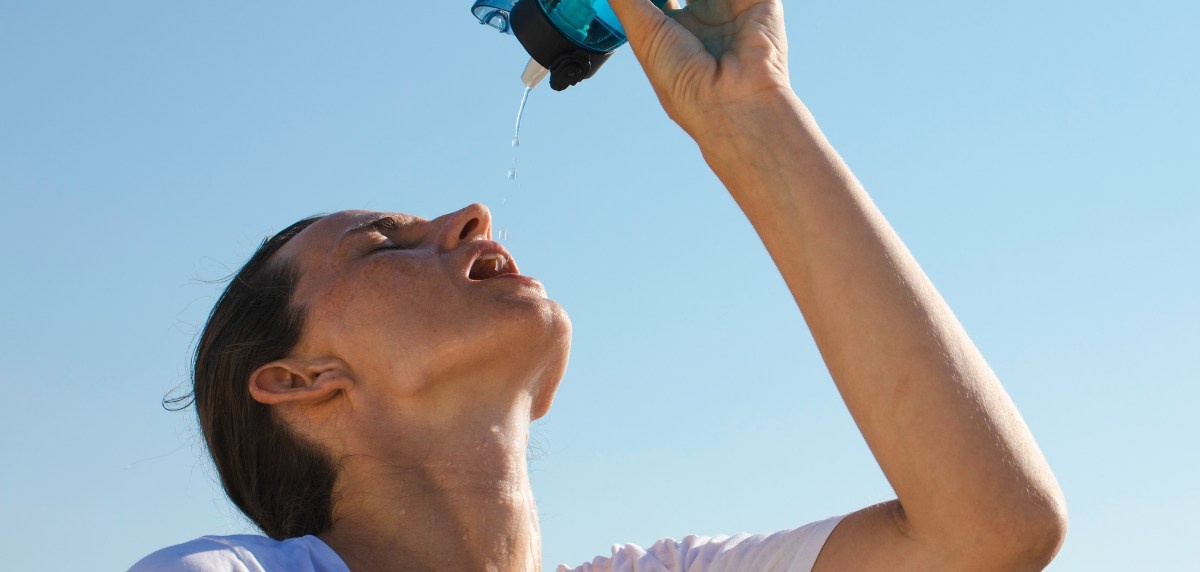
Running in the heat increases the demand for specific nutrients in your body. Runnea UK provides insights into the essential nutrients, optimal timing, and appropriate quantities:
Sodium: Sodium is an essential electrolyte lost through sweat during running. It helps maintain fluid balance in your body and is necessary for muscle and nerve function. During long runs in the heat, you may need to replenish lost sodium to prevent issues like muscle cramps. Sports drinks typically contain around 400-1000 mg of sodium per liter. If you prefer water, consider taking an electrolyte tablet with approximately 300-600 mg of sodium.
Potassium: Potassium is another electrolyte lost through sweat. It is essential for muscle and nerve function, as well as maintaining fluid balance in your body. Sports drinks usually contain around 80-200 mg of potassium per liter. Electrolyte tablets may also contain potassium.
Carbohydrates: Carbohydrates are the primary source of energy for your muscles during exercise. During long runs in the heat, replenishing carbohydrates is crucial for sustaining energy levels. Sports drinks typically contain around 60-80 grams of carbohydrates per liter. Energy gels are also a good source of carbohydrates and generally contain around 20-25 grams per serving.
Protein: Protein is essential for post-run recovery as it helps repair and build muscles. After a run, consider consuming a protein bar or protein shake containing approximately 10-20 grams of protein.
References:
Lorenzo S, Halliwill JR, Sawka MN, Minson CT. Heat acclimation improves exercise performance. J Appl Physiol (1985). 2010 Oct;109(4):1140-7. doi: 10.1152/japplphysiol.00495.2010. Epub 2010 Jul 29. PMID: 20671038.
Périard JD, Cramer MN, Chapman PG, Caillaud C, Thompson MW. Cardiovascular strain impairs prolonged self-paced exercise in the heat. Exp Physiol. 2011 Feb;96(2):134-44. doi: 10.1113/expphysiol.2010.054213. Epub 2010 Oct 1. PMID: 20889965.
Read more news about: Running Training






